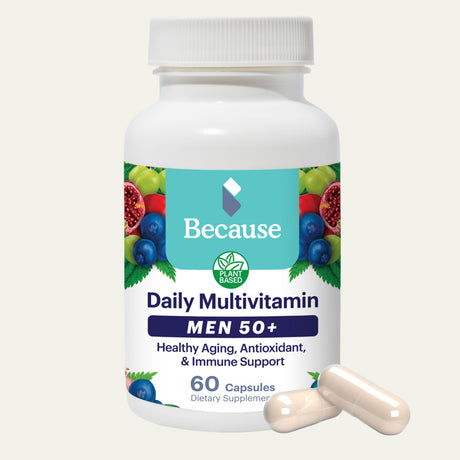Urine color can provide significant insights into our health, with clear urine occasionally raising questions about its implications. In this blog, we will explore what clear urine means, its common causes, and when it might be a cause for concern.
Understanding Urine Color: A Window to Your Health
Understanding urine color is essential for recognizing various aspects of your health. Typically, urine color ranges from pale yellow to deep amber or even a subtle orange, influenced by factors such as hydration, diet, and overall health. The yellow hue is due to urochrome, a pigment produced during the breakdown of hemoglobin. While clear urine is often associated with high fluid intake, it can also indicate potential health issues if persistent. By paying attention to urine color and its variations, you can gain valuable insights into your body's hydration status and identify any underlying medical conditions that may require attention.

What Does Clear Urine Mean?
Clear pee primarily indicates a high level of hydration, suggesting that you're drinking plenty of fluids. While staying well-hydrated is beneficial for overall health, consistently clear urine can sometimes indicate overhydration. If you are dehydrated, the color of urine will become more yellow or orange.
When electrolytes are diluted due to overhydration, it can lead to a condition known as hyponatremia. This occurs when the sodium levels in your blood become abnormally low. Symptoms of hyponatremia can range from mild to severe and may include headaches, nausea, vomiting, muscle cramps, confusion, seizures, and in extreme cases, coma.
Maintaining the right balance of electrolytes is crucial for proper muscle function, nerve signaling, and fluid balance in and out of cells. Therefore, while staying hydrated is important, it is equally essential to ensure that electrolyte levels remain balanced to avoid potential health complications.
Other Potential Causes of Clear Urine
Although hydration is the most common and simplest reason for pee to appear clear, there are other causes for changes in urine color.
Diuretics and Medications
Diuretics and certain medications can lead to clear urine by increasing the amount of urine your kidneys produce. Diuretics, often prescribed for conditions such as hypertension and edema, work by helping your body expel excess salt and water. This increases your need to urinate and causes a consistently clear appearance as your body eliminates more fluids. Other medications, such as those used to manage diabetes, can also affect pee production and lead to clearer urine.
While these medications are effective for their intended purposes, they can sometimes cause the same type of electrolyte imbalances overhydration leads to as well as other side effects, making it important to monitor urine color and consult with a healthcare professional if you notice persistent changes.
Medical Conditions That May Lead to Clear Urine
There are two conditions that can directly affect the color of your urine and result in clear pee. Those conditions are diabetes insipidus, not to be confused with Type I or Type II diabetes, and certain kidney diseases.
Diabetes insipidus is a condition that disrupts the body’s ability to regulate fluid balance, leading to excessive pee production and resulting in clear urine. This occurs because the body either does not produce enough antidiuretic hormone (ADH), which helps the kidneys manage the amount of water in the body, or the kidneys do not respond properly to ADH.
As a result, the kidneys fail to concentrate the urine, causing large volumes of diluted urine to be excreted. Individuals with diabetes insipidus often experience intense thirst and frequent urination, as their bodies attempt to compensate for the loss of fluids. Consequently, the urine remains clear due to the high water content and lack of concentrated waste products.
Certain kidney issues can lead to clear urine by impairing the kidneys' ability to concentrate urine effectively leading to more dangerous kidney problems. Conditions such as chronic kidney disease (CKD) or acute kidney injury (AKI) can damage the kidney's filtering units, known as nephrons, reducing their ability to reabsorb water and essential solutes back into the bloodstream.
As a result, the urine produced is more diluted and appears clear. Additionally, conditions like polycystic kidney disease, which involves the growth of cysts in the kidneys, can also disrupt normal kidney function, leading to an increased output of clear pee. When the kidneys are unable to concentrate urine properly, it not only results in clear urine but can also indicate an underlying problem that requires medical attention to prevent further kidney damage and maintain overall health.

When to Be Concerned About Clear Pee
It is important to be concerned about clear urine if it is accompanied by excessive thirst, frequent urination, or if it persists despite reducing fluid intake. These symptoms could indicate underlying conditions such as diabetes insipidus or kidney issues that require medical attention. If you experience any of these signs, consulting a healthcare professional is essential to determine the cause and receive appropriate treatment.
How to Maintain Healthy Urine Color
Maintaining a healthy urine color involves balancing your fluid intake to ensure proper hydration without overhydrating. Aim to drink plenty of water to keep your urine a light yellow color, which indicates adequate hydration. Incorporate a balanced diet rich in electrolytes, such as sodium and potassium, to support your body's fluid balance. Regularly monitor your urine color and adjust your fluid intake accordingly, and consult a healthcare professional if you notice persistent changes or have concerns about your hydration status.
Other Unusual Urine Colors and their Causes
Clear, cloudy, and yellow aren't the only possible colors your urine can turn. Some conditions, medications, and foods can cause your urine to turn all sorts of unusual colors.
Dark Yellow or Orange Urine
Dark yellow or orange urine can result from dehydration, concentrating urine and making it darker. Certain foods like carrots and supplements high in vitamin C can also cause discoloration. Medications such as rifampin, sulfasalazine, and some chemotherapy drugs may turn urine orange. Liver conditions, bile duct obstruction, or hemolysis can increase bilirubin levels, leading to darker urine. If the color change persists or is accompanied by jaundice, fatigue, or pain, medical attention is advised.
Phenazopyridine, a common medication used to treat symptoms of urinary tract infections (UTI), is known for causing bright orange urine.
Brown Urine
Brown urine can result from dehydration, which concentrates urine and darkens its color. Liver and biliary disorders, such as hepatitis, cirrhosis, or bile duct obstruction, can elevate bilirubin levels, leading to brown discoloration. Hemolysis, the rapid breakdown of red blood cells, and muscle damage from conditions like rhabdomyolysis can release substances like hemoglobin or myoglobin, causing urine to appear dark brown or cola-colored. Certain foods, including fava beans, rhubarb, and aloe, as well as medications like metronidazole, nitrofurantoin, and chloroquine, may also contribute to this change.
Green Urine
Green urine can result from various factors, including certain foods, medications, and medical conditions. Eating asparagus, food dyes, or artificial coloring agents may cause a greenish tint. Medications such as amitriptyline, propofol, cimetidine, and some antibiotics can alter urine color due to their chemical composition. Infections, particularly those caused by Pseudomonas bacteria, can produce green urine due to pigment production.
Red Urine
Red urine can be caused by food, medications, or underlying medical conditions. Consuming beets, blackberries, or rhubarb can lead to reddish discoloration, a harmless condition known as beeturia. Certain medications, such as rifampin, and some laxatives, may also cause red or pink urine.
Kidney stones can significantly affect urine color due to several factors. Kidney stones can cause hematuria (blood in the urine) leading to red urine, pink urine, or brown urine. It can also lead to a cloudy appearance.
Finally, urinary tract infections (UTIs) can cause irritation in the bladder and urinary tract leading to blood in the urine. As a result, you can experience red urine, pink urine, or cloudy urine.
For more information on urine color, check out this blog: How to Interpret Urine Color
Related Articles:
- Dehydration and Incontinence: How Are They Connected?
- How Can Kidney Stones Cause Urinary Incontinence?
- How to Get Rid of a UTI in 24 Hours
Sources:
Helmenstine, A. M. (2018, August 27). The Chemicals Responsible for the Color of Urine and Feces. ThoughtCo. Retrieved from https://www.thoughtco.com/why-is-urine-yellow-feces-brown-606813
Rondon H, Badireddy M. Hyponatremia. [Updated 2023 Jun 14]. In: StatPearls [Internet]. Treasure Island (FL): StatPearls Publishing; 2024 Jan-. Available from: https://www.ncbi.nlm.nih.gov/books/NBK470386/
Mayo Clinic. (2022, May 17). Hyponatremia. In Mayo Clinic. Retrieved from https://www.mayoclinic.org/diseases-conditions/hyponatremia/symptoms-causes/syc-20373711
Burke, M. (2022, May 12). Medications that can change the color of your urine. GoodRx. Retrieved from https://www.goodrx.com/health-topic/urology/medications-that-can-change-the-color-of-your-urine
National Institute of Diabetes and Digestive and Kidney Diseases. (2021, Sept.). Diabetes insipidus. National Institute of Diabetes and Digestive and Kidney Diseases. Retrieved from https://www.niddk.nih.gov/health-information/kidney-disease/diabetes-insipidus














